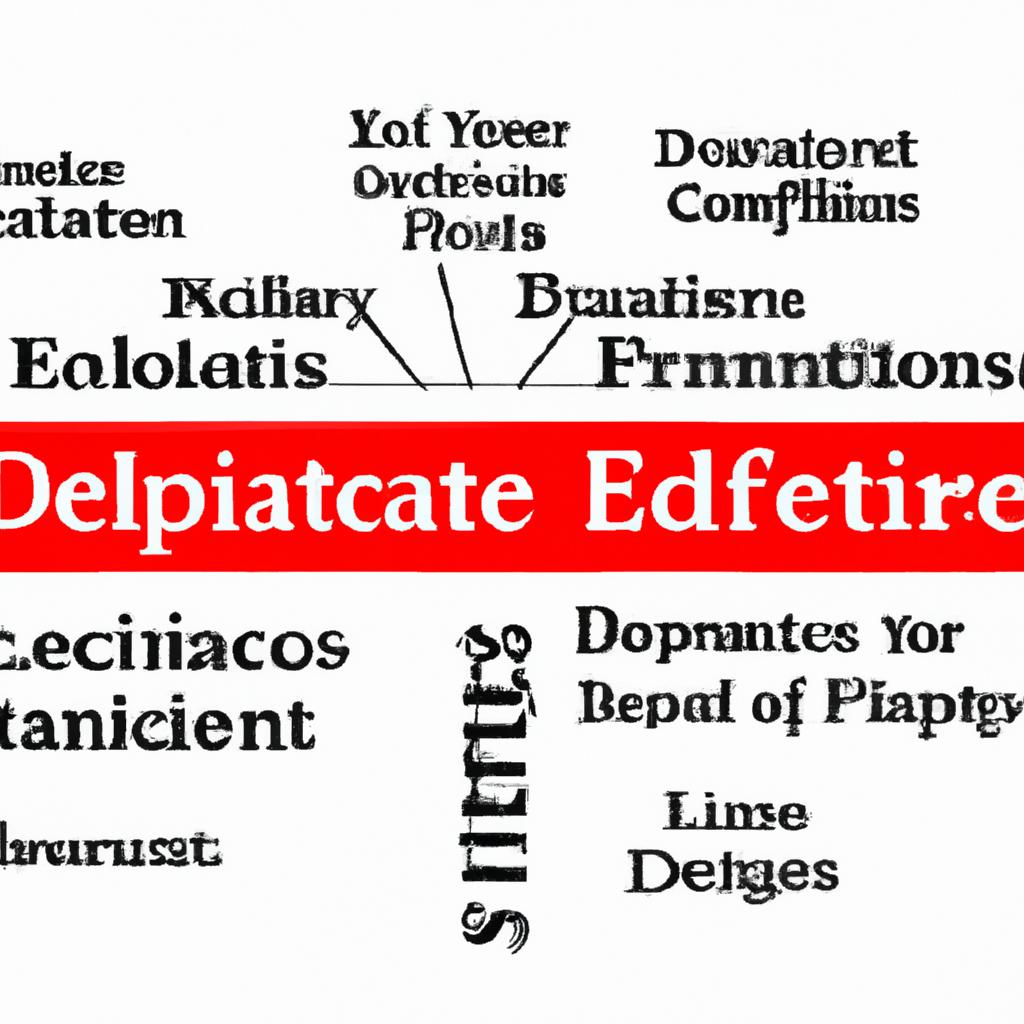In the intricate world of estate planning, the Enhanced Life Estate Deed, commonly referred to as a Lady Bird Deed, stands as a unique and powerful tool. This specialized form of deed allows individuals to retain control over the distribution of their real property while also providing the designated beneficiary with the ability to avoid probate upon the original owner’s passing. As experienced practitioners in the field of estate law, the attorneys at Morgan Legal Group in New York City understand the nuances and complexities of this asset protection instrument. Join us as we delve into the intricacies of the Enhanced Life Estate Deed and explore the benefits it can offer to those seeking to secure their legacy for generations to come.
Understanding the Enhanced Life Estate Deed
An enhanced life estate deed, also known as a “Lady Bird Deed,” is a legal document that allows an individual to transfer real property to designated beneficiaries while retaining the right to use and profit from the property during their lifetime. This type of deed can be a valuable estate planning tool for those looking to avoid probate and maintain control over their property while ensuring a smooth transfer of assets after their passing.
One of the main benefits of an enhanced life estate deed is that it allows the grantor to retain control over the property during their lifetime, including the ability to sell, mortgage, or transfer the property without seeking permission from the beneficiaries. Additionally, this type of deed can help protect the property from creditors and avoid the need for a costly and time-consuming probate process. It is important to consult with an experienced estate planning attorney to determine if an enhanced life estate deed is the right option for your individual circumstances.

Benefits of Utilizing an Enhanced Life Estate Deed
Utilizing an Enhanced Life Estate Deed can offer numerous benefits for estate planning purposes. One of the key advantages is the ability to maintain control over the property during your lifetime while still ensuring a smooth transfer of ownership upon your passing. This type of deed allows you to designate a remainderman who will automatically receive the property upon your death, without the need for probate.
Another benefit of an Enhanced Life Estate Deed is the potential to avoid Medicaid recovery after your passing. By transferring the remainder interest in the property to a trusted individual, you may be able to protect the property from being used to repay Medicaid benefits received during your lifetime. This can be a crucial aspect of long-term care planning for many individuals looking to safeguard their assets for future generations. Overall, an Enhanced Life Estate Deed provides a flexible and effective estate planning tool for those looking to streamline the transfer of real property while also protecting assets for their loved ones.
| Benefits of Enhanced Life Estate Deed | Key Advantages |
|---|---|
| Control over property during lifetime | Smooth transfer of ownership |
| Avoid Medicaid recovery | Protect assets for future generations |

Potential Pitfalls to Consider with Enhanced Life Estate Deeds
When considering enhanced life estate deeds, one must be aware of the potential pitfalls that can arise. These pitfalls include:
- Loss of control: With an enhanced life estate deed, the grantor gives up some control over the property to the remainder beneficiaries, which can lead to conflicts and disputes in the future.
- Tax implications: While an enhanced life estate deed can help avoid probate, it may have tax consequences that need to be carefully considered.
- Medicaid eligibility: Transferring property through an enhanced life estate deed can affect the grantor’s eligibility for Medicaid benefits, so it’s crucial to consult with an attorney to understand the implications.
Additionally, other potential pitfalls to be mindful of include:
- Unintended consequences: Changes in circumstances or relationships can make the terms of an enhanced life estate deed problematic down the road.
- Asset protection: Depending on the state laws and individual circumstances, an enhanced life estate deed may not offer the level of asset protection desired.
- Legal challenges: If not executed properly or if there are ambiguities in the deed, it can lead to legal challenges and disputes among family members.

Guidelines for Implementing an Enhanced Life Estate Deed
When implementing an enhanced life estate deed, it is essential to follow specific guidelines to ensure a seamless and legally binding process. One crucial aspect to consider is the selection of the remainder beneficiaries, which will determine who will inherit the property after the life tenant’s passing. It is important to carefully choose these beneficiaries to avoid any disputes or complications in the future.
Additionally, it is vital to clearly outline the rights and responsibilities of the life tenant in the enhanced life estate deed. This includes specifying whether the life tenant has the authority to make any changes to the property or if they are limited to certain actions. By clearly defining these terms in the deed, all parties involved can have a clear understanding of their rights and obligations, ultimately helping to prevent any potential conflicts.
Q&A
Q: What is an enhanced life estate deed?
A: An enhanced life estate deed, also known as a Lady Bird Deed, is a legal document used in estate planning to transfer property to beneficiaries upon the grantor’s death.
Q: How does an enhanced life estate deed work?
A: With an enhanced life estate deed, the grantor retains ownership and control of the property during their lifetime, but designates beneficiaries who will automatically receive the property upon the grantor’s death.
Q: What are the benefits of using an enhanced life estate deed?
A: One of the main benefits of using an enhanced life estate deed is that it allows the grantor to avoid probate and ensure that the property passes directly to the designated beneficiaries without the need for court involvement.
Q: Can the grantor change or revoke an enhanced life estate deed?
A: Yes, the grantor has the ability to change or revoke an enhanced life estate deed at any time during their lifetime. This flexibility allows for adjustments to be made as the grantor’s circumstances change.
Q: Are there any drawbacks to using an enhanced life estate deed?
A: While an enhanced life estate deed can be a useful estate planning tool, it may not be suitable for everyone. It is important to consult with a legal professional to determine if this type of deed is the best option for your specific situation.
Q: How can I create an enhanced life estate deed?
A: To create an enhanced life estate deed, it is recommended to consult with a qualified attorney who specializes in estate planning. They can help you draft the necessary legal documents and ensure that your wishes are properly executed.
Wrapping Up
In conclusion, an enhanced life estate deed can provide peace of mind and security for both the grantor and the grantee. By allowing individuals to retain control and use of their property during their lifetime while also ensuring its seamless transfer to a designated beneficiary upon their passing, this unique legal instrument offers a flexible and efficient estate planning solution. Whether you are looking to protect your assets, avoid probate, or simply streamline the inheritance process, an enhanced life estate deed may be the perfect tool for achieving your goals. Consider exploring this option with a qualified legal professional to see if it aligns with your individual needs and objectives. Life is unpredictable, but with the proper planning in place, you can rest assured that your legacy will be preserved for future generations to come.
 As we grow older, it becomes increasingly important to plan and prepare for the future, not only for ourselves but also for our loved ones. One way to do this is by securing a stable and secure living situation, even after we have passed away. This is where an enhanced life estate deed comes in. This type of deed offers several benefits and is a practical and effective way to ensure your property is passed down smoothly to your heirs.
As we grow older, it becomes increasingly important to plan and prepare for the future, not only for ourselves but also for our loved ones. One way to do this is by securing a stable and secure living situation, even after we have passed away. This is where an enhanced life estate deed comes in. This type of deed offers several benefits and is a practical and effective way to ensure your property is passed down smoothly to your heirs.
In this article, we will delve deeper into what an enhanced life estate deed is, its benefits and practical tips, and why it is an essential part of estate planning. We will also analyze some case studies and hear firsthand experiences from individuals who have utilized this deed.
Enhanced Life Estate Deed Explained
An enhanced life estate deed, also known as Lady Bird Deed or Transfer on Death Deed, is a legal document used to transfer property ownership from one individual (the grantor) to another (the grantee), usually after the grantor’s death. This type of deed is popular due to the additional rights and benefits it offers to the grantor during their lifetime.
Unlike a traditional life estate deed, an enhanced life estate deed allows the grantor to retain full control and ownership of the property during their lifetime. This means that they can sell, mortgage, or make any changes to the property without the grantee’s consent. The grantee only gains ownership of the property after the grantor’s death, and this transfer of ownership occurs outside of probate, which can be a lengthy and costly process.
Benefits of Enhanced Life Estate Deed
There are several benefits to having an enhanced life estate deed, which makes it an attractive option for many individuals and families. Some of the top benefits include:
1. Avoiding Probate: As mentioned earlier, one of the significant advantages of an enhanced life estate deed is that it allows for the transfer of ownership outside of probate. This process can be time-consuming, expensive, and public, making it a less than ideal option for managing the transfer of property ownership. With an enhanced life estate deed, the property title automatically transfers to the grantee upon the grantor’s death, saving both time and money.
2. Retaining Control: Another benefit of this type of deed is that the grantor can maintain full control and ownership of the property during their lifetime. This means they can make decisions about the property without the grantee’s involvement or consent, providing a sense of security and autonomy.
3. Minimizing Tax Implications: An enhanced life estate deed can also minimize the potential tax implications of transferring property ownership. By avoiding probate, the grantee can avoid certain taxes, such as inheritance taxes, which can significantly reduce the value of the property being passed down.
4. Protecting the Grantor’s Interest: The grantor also benefits from protection against any claims that may arise from the grantee’s creditors. Since the grantor retains full ownership of the property during their lifetime, the grantee’s creditors cannot make claims against the property.
5. Flexibility: Enhanced life estate deeds offer flexibility for the grantor to change their mind or make modifications to the deed during their lifetime, providing more control and peace of mind.
Practical Tips for Creating an Enhanced Life Estate Deed
Creating an enhanced life estate deed is a straightforward process, but it’s essential to ensure it is done correctly to avoid any legal or financial complications. Here are some practical tips to consider when creating this type of deed:
1. Understand State Laws: Enhanced life estate deeds may not be recognized in all states, so it’s crucial to understand your state’s laws and regulations regarding these deeds. Consulting with a real estate lawyer can help ensure you’re following the correct procedures for your state.
2. Choose the Right Grantee: It’s important to carefully consider who you want to grant the property to after your death. The grantee should be someone you trust and who will be able to manage and maintain the property.
3. Review Regularly: It’s recommended to review the enhanced life estate deed every few years to ensure it still aligns with your wishes and any changes in circumstances.
4. Update Beneficiary Designation: In some cases, there may be changes in circumstances that require you to update the beneficiary designation. For example, if the grantee passes away before the grantor, it’s essential to update the beneficiary designation to avoid any confusion in the future.
Case Studies and First Hand Experiences
Case studies and first-hand experiences can provide valuable insight into the benefits and practicality of an enhanced life estate deed. Here are some examples:
1. The Johnson Family: The Johnsons, a family with three children, wanted to protect their primary residence from any potential creditors. They chose to create an enhanced life estate deed where the property would be transferred to their children upon their deaths. This decision provided them with peace of mind, knowing that their children would inherit the property without any potential claims against it.
2. The Peterson Couple: The Petersons, a retired couple, wanted to avoid the expensive and lengthy probate process for their vacation home. They decided to create an enhanced life estate deed, making their children the beneficiaries. This decision saved their children from having to go through the probate process, and they were able to retain control and use the property during their lifetime.
3. First Hand Experience: Sarah, a retiree, created an enhanced life estate deed for her property, and this decision proved to be a wise one. After her passing, the property was transferred smoothly to her children, and they were able to avoid the lengthy and costly probate process.
Conclusion
An enhanced life estate deed is a useful tool for individuals looking to secure the transfer of property ownership to their heirs. It provides many benefits, including avoiding probate, retaining control, and protecting the grantor’s interests. With proper consideration and regular review, this type of deed can be a practical and effective way to plan for the future and ensure a smooth transfer of property ownership. So, it is recommended to get an enhanced life estate deed for your property.


